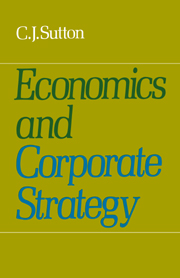Summary
A merger or takeover occurs when two or more firms are combined under common ownership. Sometimes a merger is distinguished from a takeover. A “takeover” is then said to occur when one dominant firm acquires the assets of another, whereas a “merger” produces a new firm from a marriage of two more-or-less equal partners. But, in practice, this distinction may be difficult to maintain, as would happen, for example, if a merger were actually effected by means of a takeover bid in which one of the firms offers to buy the assets of the other. We shall therefore use the terms “merger” and “takeover” interchangeably; and when appropriate, we shall refer to the actual, or potential, buying firm as Beta and to the potential victim, or seller, as Sigma.
Our major purpose is to investigate the contribution which mergers can make to the strategic development of a firm. But if we are to do this satisfactorily, we must have some understanding of the institutional constraints that affect merger activity and of the various factors which influence the costs of a takeover. It may also help to have some background knowledge of the history of mergers. With this in mind, our discussion starts in 7.1 with a general review of the procedures involved in a merger, and follows this in 7.2 with a brief historical survey.
- Type
- Chapter
- Information
- Economics and Corporate Strategy , pp. 101 - 159Publisher: Cambridge University PressPrint publication year: 1980

